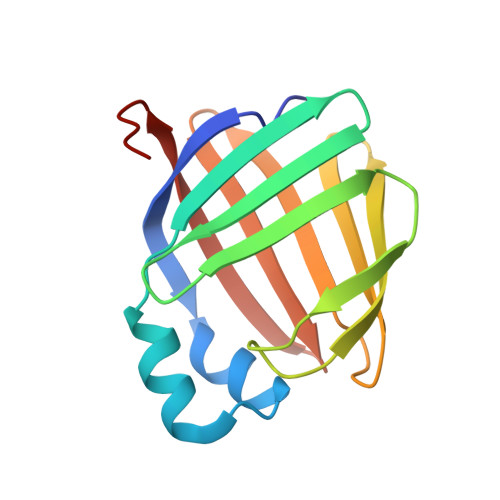Discovery of Nonretinoid Inhibitors of CRBP1: Structural and Dynamic Insights for Ligand-Binding Mechanisms.
Plau, J., Morgan, C.E., Fedorov, Y., Banerjee, S., Adams, D.J., Blaner, W.S., Yu, E.W., Golczak, M.(2023) ACS Chem Biol 18: 2309-2323
- PubMed: 37713257
- DOI: https://doi.org/10.1021/acschembio.3c00402
- Primary Citation of Related Structures:
8GD2, 8GDM, 8GEM, 8GEU, 8GEV, 8GEY - PubMed Abstract:
The dysregulation of retinoid metabolism has been linked to prevalent ocular diseases including age-related macular degeneration and Stargardt disease. Modulating retinoid metabolism through pharmacological approaches holds promise for the treatment of these eye diseases. Cellular retinol-binding protein 1 (CRBP1) is the primary transporter of all- trans -retinol (atROL) in the eye, and its inhibition has recently been shown to protect mouse retinas from light-induced retinal damage. In this report, we employed high-throughput screening to identify new chemical scaffolds for competitive, nonretinoid inhibitors of CRBP1. To understand the mechanisms of interaction between CRBP1 and these inhibitors, we solved high-resolution X-ray crystal structures of the protein in complex with six selected compounds. By combining protein crystallography with hydrogen/deuterium exchange mass spectrometry, we quantified the conformational changes in CRBP1 caused by different inhibitors and correlated their magnitude with apparent binding affinities. Furthermore, using molecular dynamic simulations, we provided evidence for the functional significance of the "closed" conformation of CRBP1 in retaining ligands within the binding pocket. Collectively, our study outlines the molecular foundations for understanding the mechanism of high-affinity interactions between small molecules and CRBPs, offering a framework for the rational design of improved inhibitors for this class of lipid-binding proteins.
Organizational Affiliation:
Department of Chemistry, Thiel College, Greenville, Pennsylvania 16125, United States.

















